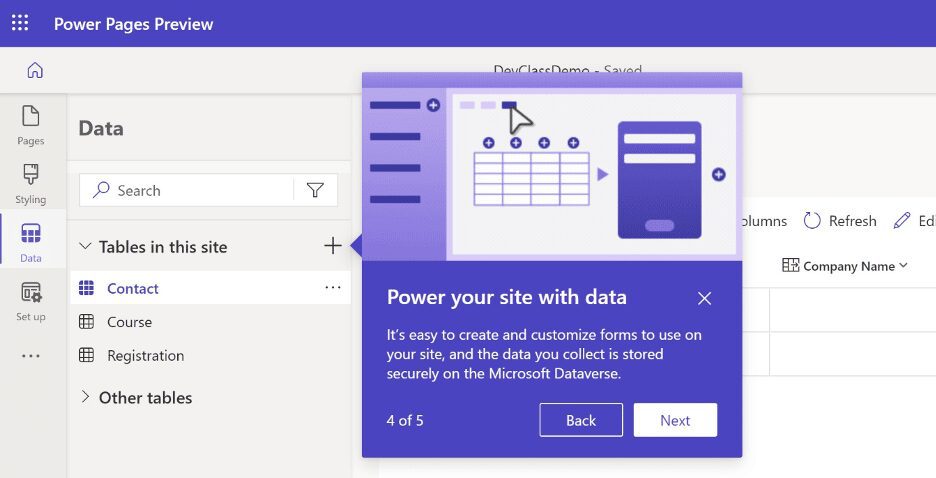Power Platform Adds Power Pages. Do We Care?
Pages might be “just another website builder” but this one has legs for Microsoft Power Platform users and developers
Microsoft announced the preview of Power Pages at the Microsoft:Build conference in May. CCS’s Application Development Group has been focused on sharing the value of Microsoft’s Power Platform with IT and business professionals in Bermuda and beyond for quite some time. Opportunity abounds for companies that understand what it can do and are willing to invest in training their teams to take full advantage of its capabilities.
It’s hard to get very excited about another website-building tool. Wysiwyg site builders have been around since the early 90s! But, to give credit where credit is due, Microsoft thought this one through and developed something that works extremely well for companies already on the Microsoft Power Platform.

A New Angle on Distributed Development?
At the simplest level, Power Pages lets business users craft web pages and sites without asking for development help. There is baked-in security that a business user wouldn’t even know about and it uses Bootstrap to ensure that designs are responsive and mobile-friendly. (There are currently no controls in place for bad designs by business users, however!)
Power Pages begins to look more interesting when you consider that it’s the new, fully-integrated member of the Power Platform family. Which means that developers don’t have to build HTML pages for the business user anymore. What they can do is just focus on the technical integration of dynamic data sources or new/existing business app functionality to make the new sites more robust. And more valuable.
It’s distributed development with new players in the mix – business users work in the WSYWIG development tool called Design Studio, adding content that is properly branded and IT works in other Power Platform apps to design and integrate functional elements defined as a need by the business. Microsoft is calling it “fusion” teams, which is an accurate description.
Business users can develop cool stuff all on their own
Pages includes the Data workspace, which lets them easily visualize and manage business data for their site with tables, forms, and lists. All the data and changes are stored in Microsoft Dataverse, letting users securely store and manage data that are used by business applications and Power Pages sites.
Business users can create and edit tables for the site and create new (or edit existing) model-driven forms and views. For their portals, these makers can create basic forms, advanced forms, and lists by using Data workspace forms, views, and dashboards.

Easy for professional developers
Power Platform developers can extend functionality using Visual Studio Code and the Microsoft Power Platform CLI to turn the site into a working app that solves a business challenge. Code components can be added to pages to provide advanced user interfaces and features.

Sprawl will always be an issue, but this time it’s apps!
If you remember when SharePoint was released, almost every company experienced the dreaded “sprawl.” Without any basic governance in place, business users went wild, creating millions of useless intranet pages, tables and lists. The intended value of SharePoint was reduced to a massive, disorganized “shared drive” for the majority of users. It has since come quite a long way, but sprawl remains a huge problem.
Pages has the same potential if not managed properly, except this time around, we are talking about business users building applications on a whim. Imagine a large organization. How many apps are going to be floating around the infrastructure? Too many most likely, which only points to the need for proper training and some controls over app development projects.
Pages has real promise for business and eases IT’s burden. Maybe.
Pages is based on Power Apps portals, so it’s not exactly new. But its ease of use for business users and seamless integration capability greatly expands its potential value. There will be a learning curve for all stakeholders, so it’s likely that IT will have to provide a different kind of support… at least for the early stages.

0 Comments